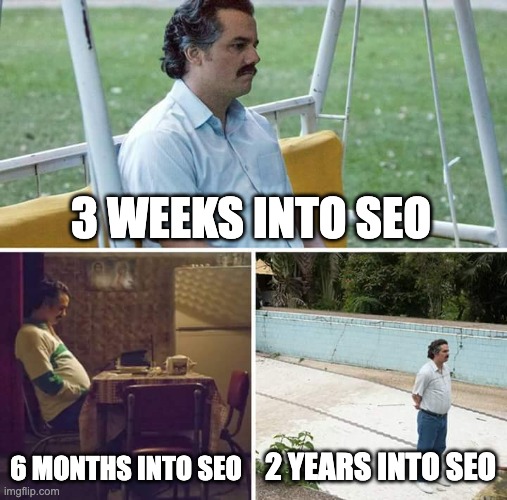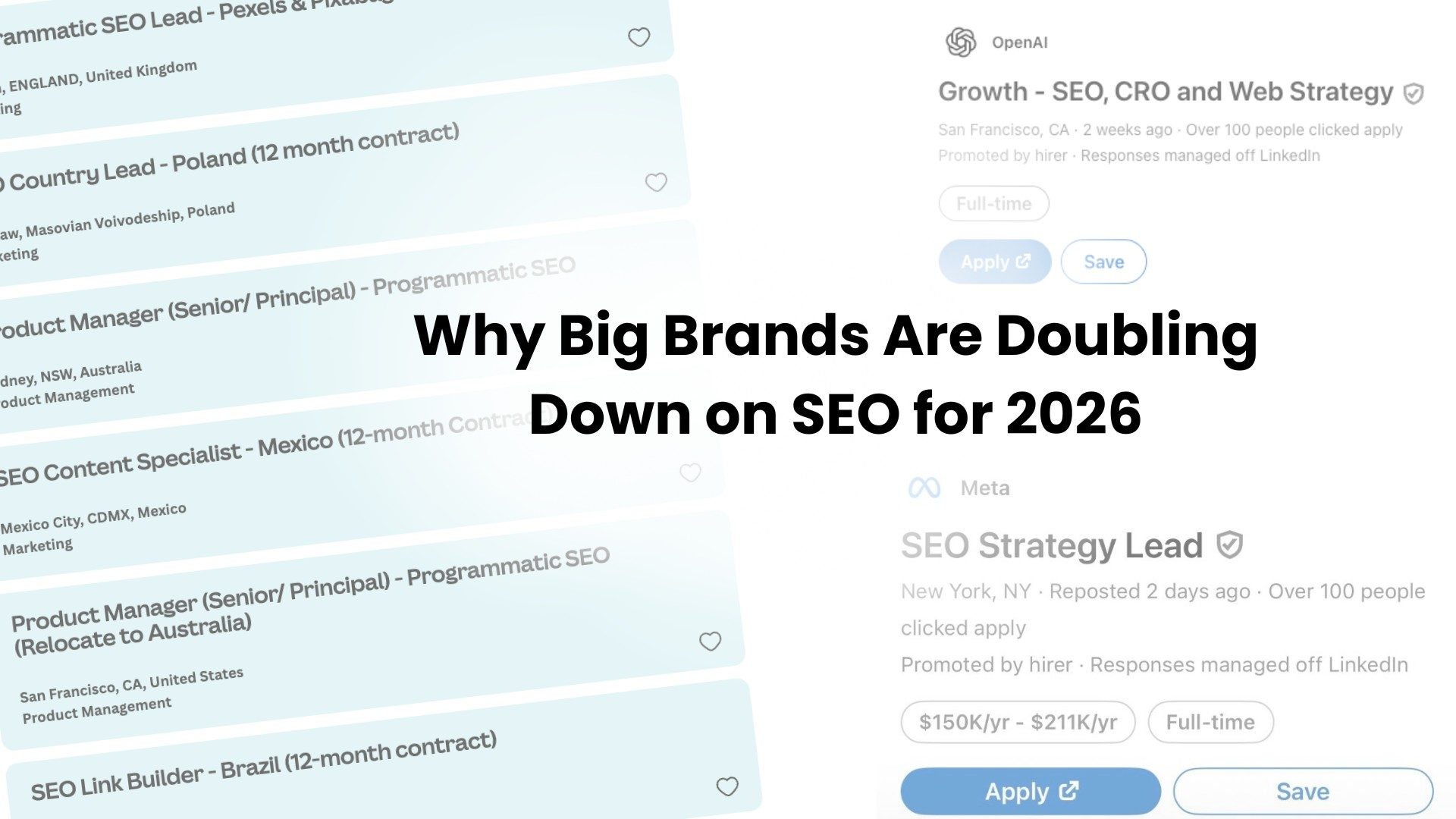How To Tell If Your SEO Is Working

You’ve invested in SEO, either financially with a provider or with your own time. You’ve waited patiently for 3, 6, or 12 months. But at some point, the question becomes unavoidable:
How do you actually know if your SEO efforts are working?
Not just “Is traffic up?” but is it bringing in leads? Sales? Revenue?
Whether you’ve hired an agency or rolled up your sleeves and tried it yourself, SEO can feel like a black box. The work is often invisible, results take time, and it’s easy to get lost in a sea of technical jargon, graphs, and ranking reports.
I love to unpack what real progress looks like (and what it doesn’t), how to measure ROI, and what red flags to watch for with any SEO provider.
Because SEO should pay off. And when done well, it can become your highest-return marketing channel.
What ‘Working’ Really Looks Like (And What It Doesn’t)
Let’s get one thing clear: SEO is a long-term investment. It rarely delivers instant gratification like Google Ads or social media campaigns. But that doesn’t mean you should be sitting in the dark. Stop looking like sad Pablo Escobar.

Here’s what progress typically looks like across the timeline:
Short-Term (The “Foundational 4 Months”)
In the early days, the wins are mostly foundational and tangible.
You’re unlikely to see a major traffic spike or an inbox full of enquiries, but that doesn’t mean nothing’s happening.
You may see:
- Your site is faster – Pages load more quickly, images are compressed properly, and unnecessary plugins or scripts are removed. This alone can improve user experience and help rankings down the track.
- The website looks or feels more user-friendly – Think cleaner navigation, clearer calls-to-action, and a layout that makes sense to your customers.
- Content is being added or rewritten – Pages may be updated with better copy, heading structures, or new sections entirely. You might see new service pages appear or old ones rewritten with clearer messaging and keyword targeting.
- Mobile performance is improved – Your site should work better on phones and tablets, both in appearance and responsiveness.
- Technical fixes are being addressed – This includes resolving dead end 404s, improving internal linking, or making sure your site is being indexed properly by Google. While these may not be visible to the eye, your SEO provider should be showing you the work done.
What this stage is not about: conversions or high-volume traffic. If someone promises big leads in 30 days from SEO, be cautious.
Mid-Term (Past The 6-Month Mark)
This is when you should start seeing traction, especially if you’re in a less competitive industry or working with an experienced team.
You’re probably not dominating the top of page one yet, but there should be signs that your site is gaining traction in search results and beginning to generate activity. This stage often sees:
- Pages starting to rank – You’ll see your website appearing on page 2 or creeping up toward the bottom of page 1 for your target keywords.
- Enquiries are coming in – You may start to see leads or contact form submissions from organic traffic. Not all of them will be high quality at this stage, but that’s normal. Early enquiries help validate that the right people are starting to find you.
- Baseline traffic data is forming – You now have measurable benchmarks for how your organic traffic is behaving — things like most-viewed pages, bounce rates, average time on site, and conversion paths. This data becomes gold when it’s time to optimise performance and scale results.
- Keyword targeting is refining – Based on how people are finding your site, your SEO provider should now be refining your strategy — doubling down on keywords that are performing and adjusting pages that aren’t hitting the mark.
This phase is often underestimated because it’s not quite “takeoff” yet — but it’s where you build momentum. It’s where smart SEO decisions start paying off and where you can begin seeing the first hints of return on investment.
Long-Term (12 Months+)
If your SEO has been strategic and consistent, by the 12-month mark, it should be doing more than just driving traffic. It should be converting that traffic into business and unlocking some more areas for your SEO provider or your marketing team to explore.
Foundational work should be completed, and now there’s a shift toward optimising, expanding, and fine-tuning your website and digital presence for sustainable growth.
At this stage, you should be thinking about:
- Conversion Rate Optimisation becoming the priority – Once you’re getting a steady flow of organic traffic, the question becomes: How do we convert more of it?
This means refining your website copy, testing different CTAs, updating page layouts, and tightening your user journey. The goal now is revenue. - SEO works better alongside your other marketing – With strong organic visibility, you’ll notice your other channels start to perform better too. Paid ads convert more because people recognise your brand. Email campaigns perform better because people already trust you.
- Your SEO strategy evolves – Instead of just focusing on your core pages, you’re now asking:
“What’s next?”
That might mean:- Building out a full content strategy (blogs, guides, FAQs)
- Launching a digital PR campaign to earn high-authority backlinks
- Targeting new verticals, locations, or niche services
- Creating lead magnets or educational content to capture early-stage buyers
- Analytics becomes sharper – You now have a full year of search data to work with. Your SEO team should be using this to identify new opportunities, test hypotheses, and double down on what’s working.
The 12-month mark is often when business owners shift their mindset from “Is SEO working?” to “How far can we take this?”
It’s no longer about proving the value, it’s about compounding it.
SEO ROI: The North Star
Let’s be honest: keyword rankings are nice, but they don’t pay the bills. Always ask:
Is SEO contributing to your bottom line?
The best way to assess ROI from SEO is to set real, measurable KPIs based on how your business actually makes money. Here’s how to do it:
Start by working backwards.
If an average customer brings in $2,000 and your profit margin is 40%, that’s $800 in profit per sale. If you’re paying $2,500 per month for SEO, you’ll need just over three new jobs per month to break even — assuming the leads are qualified and likely to convert.
Now consider your conversion rate. If you know one in five enquiries becomes a paying customer, your SEO should be generating around 15 to 20 organic enquiries each month just to cover its cost.
This is where ROI in SEO becomes clear:
- It’s not just about traffic going up.
- It’s not about vanity metrics like impressions or domain authority.
- It’s about how many leads you’re getting and how much revenue those leads bring in.
Set KPIs around what actually matters:
- Organic calls, form submissions, and quote requests
- Conversions from organic traffic in GA4 or your CRM
- Revenue attributed to organic search over time
- Cost per lead and customer vs. other channels (e.g. Google Ads)
With clear financial targets, you’re in a position to hold your provider accountable — and to see SEO for what it really is: an investment. One that should be returning profit, not just activity.
Red Flags: When You’re Not Getting the Full Story
If your SEO provider can’t clearly explain what’s being done or how it ties to your business goals, that’s a problem. Here are some common red flags that signal things might not be on track:
- They only talk about rankings or impressions without connecting it to leads, enquiries, or revenue.
- They use technical jargon to confuse, not clarify. Reports should make things clearer, not more complicated.
- They avoid setting clear KPIs or goals.
- There’s no visibility into what work is being done. You should see evidence of changes: new pages, updated content, technical improvements.
- They say “SEO just takes time” without any roadmap — while SEO is a long game, you should still have a timeline and strategy you can follow along.
How to Track Progress Yourself (Even If You’re Not Technical)
You don’t need to be an SEO expert to know if things are heading in the right direction. There are a few easy ways to keep tabs on progress:
- Google Search Console – See what keywords your site is showing up for on Google, how often you’re appearing, and how many clicks you’re getting (How you perform on Google).
- Google Analytics 4 – Track how organic users behave: what pages they visit, how long they stay, and whether they convert (How users behave on your website).
- Your own inbox or CRM – Are you getting more quote requests, phone calls, or contact form submissions each month from people who found you via Google?
- Google your target keywords – Periodically review how you show up for the keywords you want by a few simple Google searches. NOTE: they fluctuate daily and fluctuate depending on location. Don’t get fixated.
TIP: Make sure you have full Administrator level access to ALL of your data, even when working with an agency or provider. You should own your own data, no one else.
SEO Is One Part of a Bigger Marketing Picture
Strong SEO doesn’t exist in a vacuum, it complements and amplifies the rest of your marketing.
When your website ranks well and attracts the right audience, every other marketing channel benefits. Your Google Ads start converting better because people already recognise your brand. Your email campaigns perform stronger because your audience has seen your content in search. Even word-of-mouth referrals land better when your website backs up what people say about you.
SEO can also help you get more mileage out of your existing marketing content. A well-optimised blog post can double as sales enablement, social media material, or educational content for your leads.
Likewise, digital PR and brand-building campaigns can earn backlinks that directly improve your organic rankings. Rather than treating SEO as a separate arm of marketing, it works best when it’s fully integrated into a broader strategy — one that drives awareness, trust, and conversions at every stage.
Stay In Charge of Your SEO Investment
SEO should never feel like a black box. If you’re spending money each month and aren’t sure what it’s doing for your business, that’s a sign something’s off. You deserve clear goals, transparent reporting, and tangible progress. Whether that’s new leads, better search visibility, or a stronger foundation for your online presence.
The question isn’t just “Is my SEO working?” It’s “Is my SEO helping me grow?” If you can’t confidently answer yes, it might be time to revisit your strategy or your provider.
At 5 Twelve, we cut through the fluff. If you’re unsure where you stand, we offer honest, ROI-focused SEO complimentary sessions to help you figure out what’s working, what’s not, and what to do next.



